Are you longing for luscious, flowing locks while battling split ends and hair breakage? The journey to healthier, longer hair might be closer than you think.
Introducing the transformative power of protective styles – your key to unlocking the secrets of length retention. Whether your hair is natural, relaxed, or in transition, the magic of protective styles can revolutionize your hair care routine.
From braids to twists, weaves to wigs, these styles offer more than just a chic appearance; they act as a shield against the perils of daily handling, harsh weather, and external elements that often lead to hair damage.
Imagine a world where your hair could thrive without constant manipulation – this is precisely where protective styles shine.
The secret lies in their ability to minimize the need for continuous combing, brushing, and styling, all of which can contribute to breakage.
By embracing protective styles, you’re granting your hair the gift of rest and unimpeded growth. But do they genuinely aid in retaining length? The answer is a resounding yes.
When you’re on the path to achieving longer hair, questions naturally arise. It’s a common curiosity: can protective styles truly help in preserving length? The concept is clear – protective styles encompass an array of hairstyles designed to safeguard your precious strands from potential damage brought about by external factors like heat and excessive manipulation.
The allure of protective styles goes beyond mere protection. They offer a world of versatility and endless styling possibilities.
From elegant updos to carefree bohemian curls, you can experiment with diverse looks while ensuring your hair remains healthy and on its journey to growth.
So, if you’re ready to witness your hair flourish like never before, it’s time to embrace the world of protective styles and unveil the secrets to remarkable length retention.
The importance of length retention in hair care
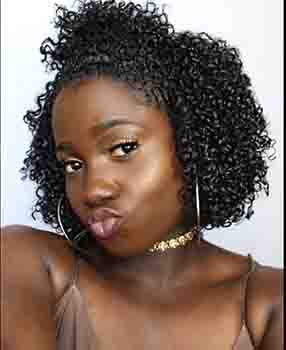
Are you longing for luxuriously long locks? The secret may not be what you think: it’s not just about hair growth, but retaining that growth.
Length retention is a critical aspect of hair care, especially for those dreaming of long, flowing hair.
On average, hair grows about half an inch each month. However, factors like breakage, unhealthy ends, and overprocessing can negate this growth, making your hair journey feel like a running on a hamster wheel.
Think about it like this: you’re saving money for a big purchase, but unexpected costs keep eating into your savings.
Similarly, whilst your hair is diligently growing, damage and breakage could rob you of noticeable progress.
It’s not just about growth, but preserving what you already have – that’s length retention’s key role.
Effects Of Dry Hair On The Retention Of Hair Length
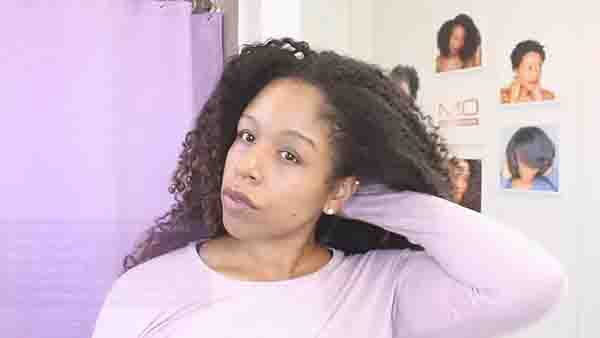
Hey there! Want to know a haircare hack? Keeping your hair properly moisturized is key to retaining length.
Dryness is really a hair-length retention nightmare. Dry hair becomes weak and brittle, leading to breakage. Ever noticed those tiny hair pieces on your comb? That’s breakage, stealing inches off your dream hair length.
Remember your friend with bouncy, long hair? She’s a pro at keeping her hair well-hydrated. Or consider the case of professional swimmers – their hair often looks dry and damaged due to chlorine exposure, affecting their hair length.
Remember, hydrated hair equals long, healthy hair. Don’t let dryness be a barrier to your hair goals.
Are Braids Good For Length Retention

Yes, braids are excellent for length retention. They work as a successful protective style by minimizing hair manipulation.
Protective styles like braids help keep your hair intact by reducing the risk of breakage.
Less handling means your hair has more opportunity to grow and maintain its length.
For example, by wearing your hair in braids, you’re shielding it from environmental factors that could potentially cause harm. So, not only do braids look stylish, but they also serve an important purpose in your hair care routine.
The Connection Between Protective Styling
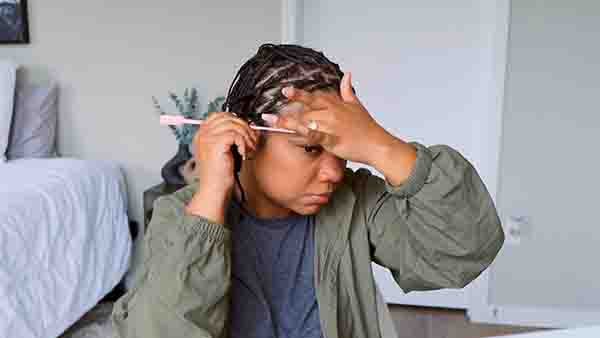
Importance of Safeguarding Hair Integrity
1. Reducing Future Damage: Protective styling plays a crucial role in shielding existing hair from potential harm. By minimizing stress and maintaining the hair’s integrity, it contributes to the overall health and length retention of the hair.
This approach is particularly important, as studies indicate that preventing damage is a key factor in promoting hair growth, surpassing reliance on supplements alone.
2. Prioritizing Hair Health: Protective styles serve as a preventive measure against future damage, allowing the hair to grow without constant setbacks caused by breakage and split ends.
Coverage and Detangling
1. Hair End Protection: Effective protective styles strategically cover the hair ends. Styles like braids, twists, or knots offer dual functionality by not only safeguarding the ends but also reducing the chances of tangling. This is a significant contributor to minimizing breakage.
2. Breakage Prevention: Protecting the hair ends through appropriate styling helps manage hair growth.
Preventing breakage at the ends is crucial; if hair breakage occurs at a rate equal to or faster than growth, it can hinder progress.
Suitability to Hair Type
1. Tailoring to Individual Needs: The choice of protective style should align with an individual’s hair type. For instance, individuals with fine hair need styles that prevent damage and breakage while promoting length retention.
2. Importance of Selection: Selecting the right protective style requires careful consideration to ensure that it suits the hair type and addresses specific needs.
Challenges and Impact
1. Overcoming Challenges: Despite challenges like lack of motivation or time constraints, numerous testimonials highlight the substantial impact of prioritizing protective styles on hair length retention.
The Protective Styling Advantage
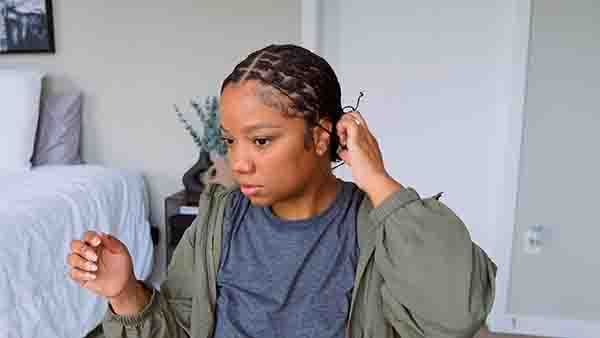
1. Minimizing Exposure to Harm: The primary advantage of protective styling is its capacity to shield hair from detrimental external elements. By utilizing hairstyles that secure the hair, these styles reduce the need for heat styling, combing, and manipulation—factors that contribute to breakage.
2. Absence of Stressors: The absence of daily stressors provides an environment where hair can thrive, free from the hindrance of split ends and breakage.
Tailored Styling Choices
1. Optimal Selection for Length Retention: Not all protective styles offer the same benefits. Optimal choices, such as braids, twists, or buns, effectively conceal hair ends and lower the risk of breakage.
2. Consideration for Tension: Styles that maintain hair in a stretched state are preferable over tightly pulled styles due to the potential for tension-induced hair loss.
The Distinction Between Protective Hairstyles And Actual Hair Growth
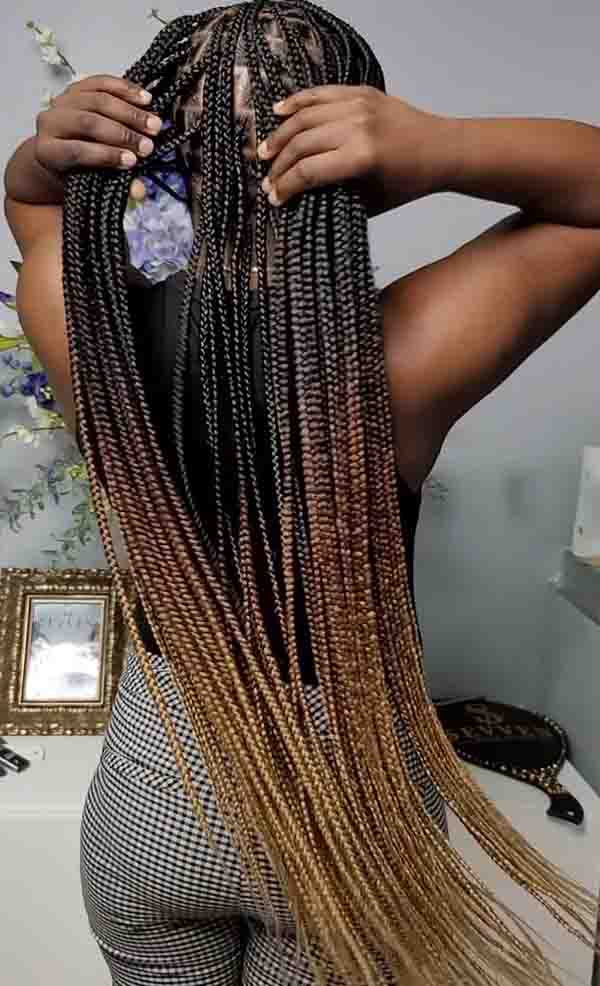
- Protective hairstyles do not increase the speed of hair growth.
- They can effectively aid in maintaining hair length.
- These styles are excellent at locking in moisture, which is important for hair health.
- The key benefit lies in their ability to prevent and reduce hair breakage.
- As such, these hairstyles may indirectly support hair growth by preserving length and preventing damage.
Revolves Around Maintaining And Promoting Hair Growth

- Hair is prone to damage from heat, cold, and friction. Protective styles, such as braids, twists, and updos, reduce exposure to these elements, thus maintaining hair health and promoting growth.
- Protective styles also lower the manipulation needed for daily styling, which can cause significant breakage. Limited handling aids in preserving the hair’s length.
- Moreover, these styles keep hair strands secure, providing support and lessening the strain on hair ends—the most vulnerable to breakage. By doing this, protective hairstyles significantly contribute to the retention of hair length.
How Do You Retain Length With Protective Styling
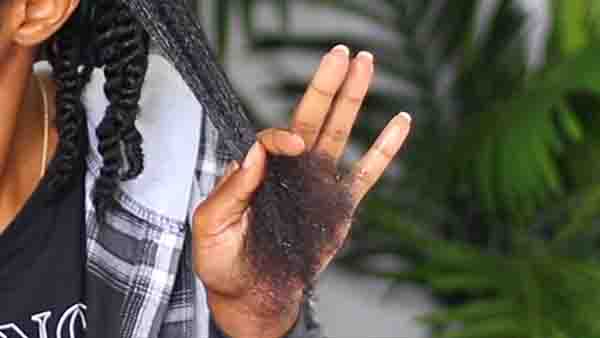
- Start with cleansing and detangling your hair, setting the stage for a smooth installation.
- Moisturize your hair and avoid excessively tight styles, which can lead to breakage.
- Keep your style in place for 6-8 weeks, ensuring periodic checks for any discomfort.
- Treat your hair with moisturizer and special attention paid to edges that are more prone to damage.
- Lock in that goodness with nighttime care and a diligent removal process when necessary.
- Finish with a deep conditioning session to replenish moisture and strength.
How Long Should You Keep A Protective Style In
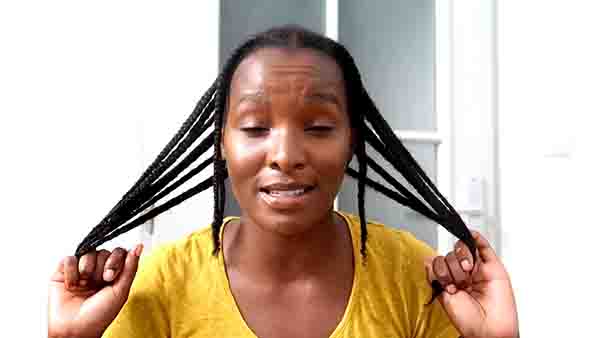
Wondering how long to keep that protective style in your hair? While it’s typical to rock these styles from about a few days up to 6-8 weeks, pushing any longer can risk damaging your mane.
Here’s how to decide when to switch up.
- Don’t get carried away. Leaving your protective style in for more than two months can lead to dehydration, increased scalp tension, and even hair loss.
- Feel the texture. If your hair begins to tangle, feel dry, and build up dirt and grease, it’s time to change.
- Listen to your scalp. If it’s too tight or painful, pull the break.
What Is The Best Protective Style For Length Retention?
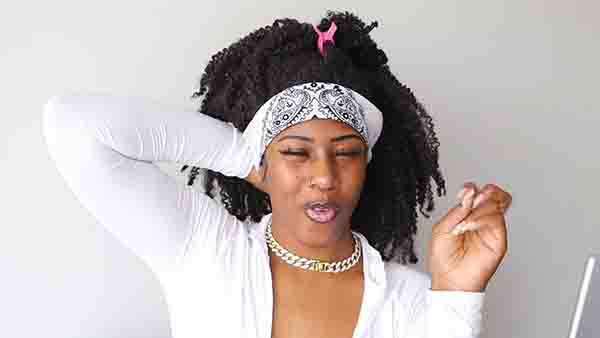
1. Box Braids, Senegalese Twists, Microbraids:
These classic protective hairstyles shield hair from environmental stressors by keeping it tightly tucked away. It’s essential to ensure they are not too tight, preventing tension on the scalp and edges.
2. Twists:
Similar to braids, twists are composed of two strands of hair intertwined. This style’s adaptable nature allows for variations in size, length, and overall look.
3. Buns and Updos:
These styles provide protection for the ends of hair while reducing friction. Buns and updos can be effortlessly recreated for an array of formal and casual occasions.
4. Wigs and Weaves:
By wearing wigs or weaves, natural hair remains protected while you experiment with different styles. The wig or weave should not be overly tight or induce any stress on the scalp.
5. Crochet Braids:
In this protective style, pre-braided or pre-twisted extensions are attached to your natural hair with a crochet hook, providing an easier installation and removal process.
6. Protective Braid-Out or Twist-Out:
Achieve a protective style and enjoy the flexibility of wearing your hair loose by doing a braid-out or twist-out. Braid or twist hair, leave it for a few days, and then unravel for a defined style.
7. Faux Locs:
Extensions are wrapped around natural hair to mimic the look of dreadlocks. Faux locs take on a trendy look while adequately safeguarding your natural hair.
8. Cornrows:
Hair is braided close to the scalp in patterns, making for a versatile style that can be maneuvered into various shapes and designs.
9. Halo Crown Braid:
This styles calls for a braided or twisted halo around your head, with the rest of the hair being tucked away underneath. It offers a fashionable, low-manipulation option.
10. Roller Sets or Curlformers:
By setting hair on rollers or Curlformers, curls or waves can be formed. This style protects hair while achieving a heat-free style.
Importance Of Minimizing Friction On Hair Ends To Prevent Various Forms Of Damage
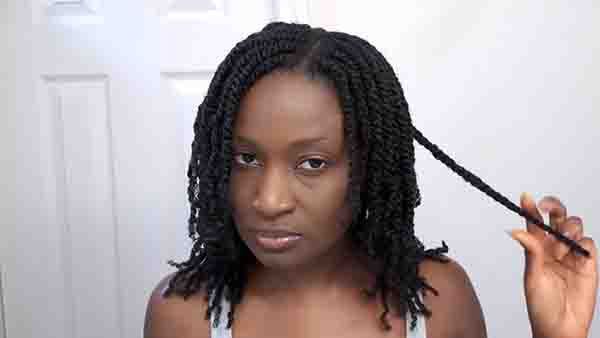
In your quest for healthier, longer hair, every detail counts – even the friction your hair ends experience daily!
This seemingly minor factor can result in major drawbacks like breakage, split ends, and a frightening increase in single strand knots.
That’s right, friction-induced issues can directly affect the length of your hair. But you’re in luck because there’s a solution: protective styles. By shielding your hair, especially the ends, from excessive friction, these styles not only prevent damage but also aid in length retention.
Imagine your hair growing longer and stronger with each passing day – that’s the power of minimizing friction! Isn’t it worth a try?
An Alternative Perspective On The Role Of Protective Styles In Growing Out Hair
The first point to consider is that great hair growth can come from proper hair care alone.
For instance, after chopping off chemically relaxed ends, many people, including myself, have achieved significant hair growth without consistently relying on protective styles.
Key to this approach is maintaining the moisture of your hair and sealing its ends.
Especially when your hair reaches shoulder length, these two factors become critical. The ends of your hair are the oldest and most fragile, leaving them more susceptible to damage.
Contrary to popular belief, you can promote strong, healthy ends and, by extension, good length retention without depending on protective styles.
So, while protective styles certainly have their place, don’t forget the potential of excellent hair care on its own. Nourish your hair and treat it well, and you might be surprised by the results.
Importance Of Getting Regular Hair Trims
Isn’t it confusing how trimming – which literally involves cutting – can aid in length retention? Fact is, it’s an essential part of maintaining healthy hair.
- Trimming regularly prevents split ends, those pesky little devils, from traveling up your hair shaft causing increased breakage.
- This isn’t just a theory – it’s grounded in research showing that unchecked split ends significantly sabotage your length goals.
- More importantly, regular trims promote better hair health by warding off further damage.
So, don’t shy away from those regular snips. Trust the process and embrace healthier, longer hair.
Using Flat Irons Excessively If The Goal Is To Retain Hair Length
Excessive use of flat irons has a deleterious impact on hair length retention. The extreme heat these instruments produce depletes moisture, engendering breakage.
This is particularly relevant for those with protective hairstyles, as length retention is a key goal. Notwithstanding frequent trims to resolve heat damage, these counteract efforts to maintain length.
A poignant example is the blow dryer – a common tool for such styles. Shifting to medium or low heat settings mitigates this damage and supports length retention.
Thus, tempering the use of high-heat tools like flat irons is pivotal in protecting hair and retaining desired length.
FAQ
You can retain length without protective styling by focusing on a gentle hair care routine. Use minimal heat, detangle with care, avoid harsh chemicals, moisturize regularly, and use satin or silk pillowcases to reduce friction. Regular trims to prevent split ends are also important.
Products that promote moisture, strength, and minimal breakage can help retain length. Look for moisturizing shampoos and conditioners, leave-in conditioners, oils like jojoba or argan oil, and protein treatments to strengthen the hair.
Braids, particularly box braids, are among the most popular protective styles. They are versatile, low-maintenance, and offer great protection for the hair.
Yes, protective styles can help prevent breakage by minimizing manipulation and friction on the hair. However, it’s essential to ensure that the protective style isn’t too tight, as this can lead to breakage at the hairline.
Yes, a hair wrap, often using a silk or satin scarf, can be considered a protective style. It helps protect your hair from friction and environmental factors, preventing damage and breakage.
Protective styles protect your hair from excessive manipulation, environmental stressors, and friction. They help retain moisture, reduce breakage, and promote healthier hair growth.
To create loose twists on natural hair, start by sectioning damp hair. Take a small section, apply a styling product or leave-in conditioner, and then split the section into two. Twist the two halves around each other while moving down the length of the hair. Secure the end with a hair elastic or clip.
Retaining length with protective styling involves choosing styles that minimize manipulation and protect the ends of your hair. Ensure your hair is well-moisturized before styling, and avoid tight or heavy styles that could lead to breakage.
Keeping your hair in braids all the time can affect your hair’s health if not done correctly. Over time, constant tension from tightly braided hair can lead to breakage, thinning, and hair loss. It’s important to balance protective styling with periods of rest.
Braids can help reduce the appearance of shrinkage because they stretch out the hair. However, once you take out the braids, your hair will revert to its natural curl pattern and experience its usual level of shrinkage.
Smaller, more intricate braids tend to make your hair appear longer because they stretch out the hair strands more effectively. Micro braids, for example, can create the illusion of longer hair.
For maximum growth and hair health, it’s generally recommended to keep braids in for 6-8 weeks at most. Keeping them in for too long can lead to hair breakage, tangling, and even potential damage to the hair follicles.
Yes, cornrows can help with length retention by protecting your hair from manipulation and environmental factors. They also distribute tension more evenly across the scalp compared to individual braids.
Yes, cornrows can aid in retaining length. They keep the hair strands secured and help reduce breakage by minimizing the need for daily styling and detangling.
To retain length, aim to trim your hair every 8-12 weeks, or as needed. Regular trims help prevent split ends from traveling up the hair shaft and causing further damage.
Conclusion: A Holistic Approach to Healthy Hair Growth
While the efficacy of protective styles in retaining length may vary, their contribution to healthy hair growth is evident.
Finding the right protective styles for your hair type and adhering to reasonable wear durations are pivotal.
Complement protective styling with a consistent hair care regimen that includes moisturizing, deep conditioning, and nighttime protection.
By striking a balance between care and protective styling, you can lay the foundation for longer, healthier hair growth.

